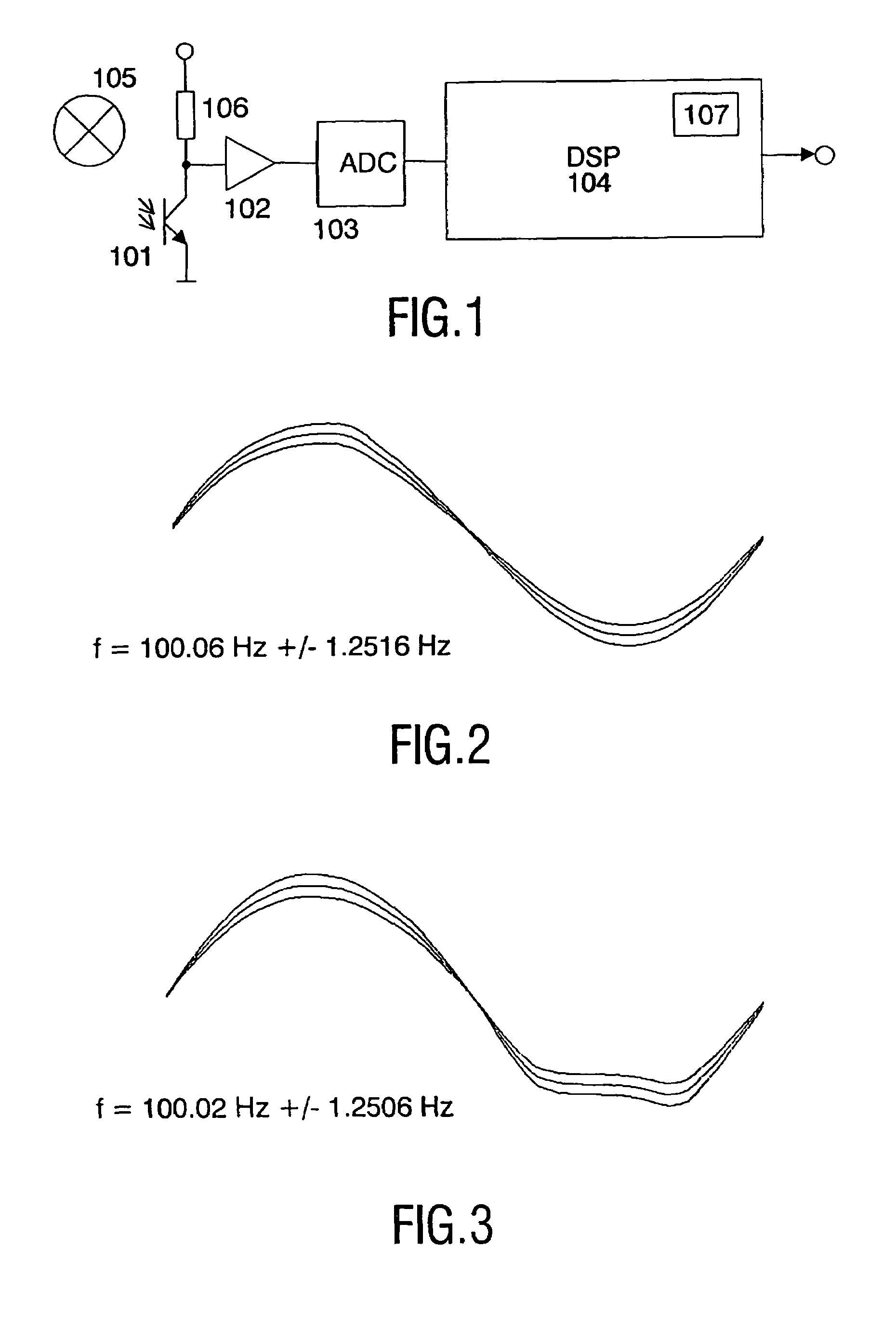Method and device to identify a periodic light source
- Summary
- Abstract
- Description
- Claims
- Application Information
AI Technical Summary
Benefits of technology
Problems solved by technology
Method used
Image
Examples
Embodiment Construction
[0036]FIG. 1 illustrates an embodiment of the invention to identify an environmental source, in the following a light source. A phototransistor (101) is operated with a bias voltage by a pull-up resistor (106) in the linear region to pick up light emitted from ambient light sources. The phototransistor (101) output may be amplified (102) to feed an analog-to-digital converter (ADC) (103). The current measured by the ADC (103) may be proportional to the light intensity as long as the light is not too bright. A digital signal processing (DSP) device (104) may carry out computations for a signal-processing algorithm described in the following. Since most artificial light sources typically have operating frequencies of a few hundred Hertz, it is typically sufficient to sample the signal in the ADC (103) at a few thousand Hz. The workload for the algorithm in the DSP (104) is therefore moderate since signals of interest have a relatively low frequency. Thereby, it is possible to make use...
PUM
 Login to view more
Login to view more Abstract
Description
Claims
Application Information
 Login to view more
Login to view more - R&D Engineer
- R&D Manager
- IP Professional
- Industry Leading Data Capabilities
- Powerful AI technology
- Patent DNA Extraction
Browse by: Latest US Patents, China's latest patents, Technical Efficacy Thesaurus, Application Domain, Technology Topic.
© 2024 PatSnap. All rights reserved.Legal|Privacy policy|Modern Slavery Act Transparency Statement|Sitemap



